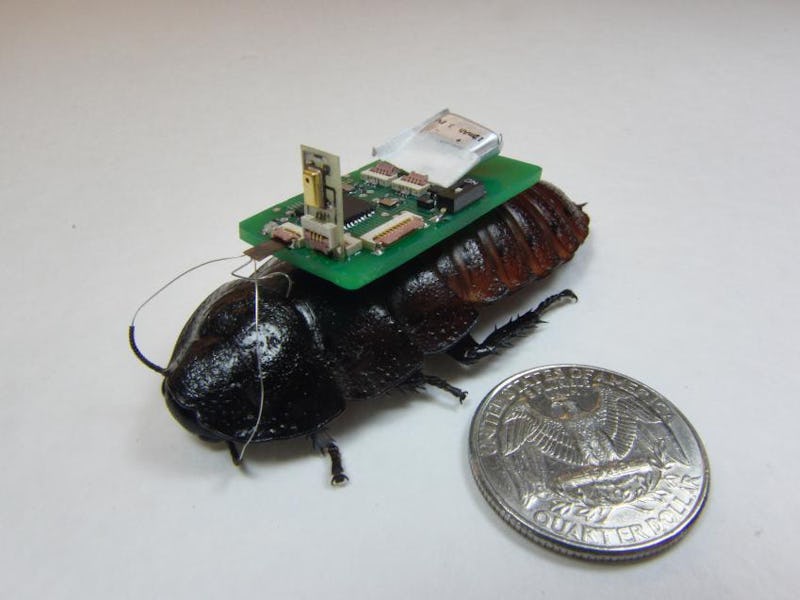
Given that cockroaches are notorious for surviving just about anything —including your exterminator — it’s no wonder scientists think they’re the perfect specimens for cyborg missions to scope out disaster-stricken buildings. Paired with unmanned aerial vehicles (UAVs), researchers at North Carolina State University have developed a mapping system that will allow the enhanced critters to report back signal data that can help researchers to understand terrain like collapsed buildings.
In order for the drone and biobots to work together, a custom software translates sensor data from the biobot which allows it to create a map of the explored area. It can then feed that information to the drone, where to hover next to collect more data. The program then stitches the data from the different locations together into one continuous map. The radio sensor engineered onto the biobots makes sure they can’t scurry outside of the radius of the drone.
A lab test of the mapping technology using robotic roaches.
“This has utility for areas – like collapsed buildings where GPS can’t be used,” says lead researcher Edgar Lobaton. “A strong radio signal from the UAV could penetrate to a certain extent into a collapsed building, keeping the biobot swarm contained.”
For now the team is using robotic roaches to test out the software, but researchers have had success with actual biobots in the past. In a previous study, co-lead author Alper Bozkurt used biobots with microphones to analyze sound in disaster relief scenarios. However, the biobots were controlled with an “electric fence,” not UAV technology.
Cockroaches have a unique form of locomotion that allows them to move 20 body lengths per second using body-friction legged crawling, making them the perfect choice for robots that need to reach small and hard to reach places. In February, researchers at UC Berkeley created a similar but much larger robot, (CRAM (Compressible Robot with Articulated Mechanisms)/)[https://www.inverse.com/article/11261-researchers-spawn-compressible-cockroach-inspired-robots], which was able to move like a cockroach but as only able to withstand 20 times its weight — 1/45 of the capacity of an actual cockroach. So far researchers haven’t developed a completely robotic cockroach that beats the real thing, which is why researchers at NCSU will be moving on to using biobots next.
“The next step is to replicate these experiments using biobots, which we’re excited about,” says Lobotan.
Of course, cyborg insects aren’t actually a new technology — DARPA has been working on them for seven decades. Yet cockroaches tend to be the preferred insect for roboticists — there are a number of robotic cockroaches in labs across the country. These cyborgs seem to keep multiplying, just like their purely organic cockroach siblings.